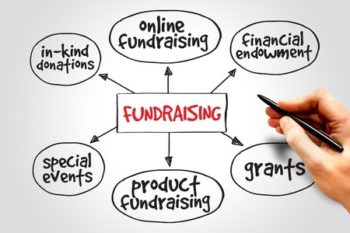Nonprofit Agency: How to Optimize Your Impact with Specialist Support
Nonprofit Agency: How to Optimize Your Impact with Specialist Support
Blog Article
The Function of Community Interaction in Nonprofit Fundraising: Building Lasting Relationships for Lasting Support
Neighborhood interaction is increasingly acknowledged as an essential part of effective not-for-profit fundraising. By cultivating real relationships with local stakeholders, companies can cultivate depend on and commitment, which are vital for sustainable assistance. However, the approaches and techniques utilized to involve communities vary commonly, increasing essential concerns regarding effectiveness and impact. What are the best techniques for cultivating these vital links, and how can nonprofits determine their success in this sector? Understanding these dynamics can dramatically influence the future of fundraising initiatives and the total mission of not-for-profit companies.
Recognizing Neighborhood Involvement
Area involvement is an essential element of effective not-for-profit fundraising initiatives. It describes the techniques and tasks that organizations employ to get in touch with their neighborhood communities, fostering relationships that are equally beneficial. Understanding area interaction includes acknowledging its multifaceted nature, which includes participation, collaboration, and outreach. Nonprofits have to identify vital stakeholders-- such as area participants, regional organizations, and various other companies-- to create efficient interaction methods.
Effective neighborhood involvement is predicated on active listening and responsiveness to the demands and rate of interests of the area. This process involves getting responses, recognizing community dynamics, and guaranteeing that the organization's goal straightens with regional top priorities. Engaging the area can take different kinds, including public meetings, volunteer chances, and partnership efforts, each designed to urge participation and investment in the organization's objectives.
Furthermore, community engagement must be approached as a continuous discussion instead of an one-time effort. By cultivating a comprehensive setting where neighborhood voices are listened to and valued, nonprofits can construct a strong structure for future fundraising endeavors. Inevitably, a deep understanding of area engagement empowers organizations to develop authentic connections that improve their total performance and sustainability.
Benefits of Solid Relationships
Solid partnerships created via community engagement return numerous benefits for nonprofit fundraising initiatives. Primarily, these connections foster trust fund and integrity, vital elements in motivating donors to contribute. When prospective fans see a nonprofit proactively associated with their community, they are most likely to count on its objective and influence.

In addition, these connections promote reliable communication. Nonprofits can leverage their links to share stories of impact, updates, and requires, ensuring that supporters remain informed and engaged. This open line of communication not just reinforces bonds yet also urges word-of-mouth promo, broadening the not-for-profit's reach.
Finally, strong neighborhood ties can attract brand-new companions and sponsors. Businesses and individuals are a lot more inclined to straighten with companies that demonstrate significant community participation, offering extra sources and assistance that can significantly boost fundraising capacities. Hence, growing durable connections via area involvement is important to a not-for-profit's long-lasting fundraising success.
Approaches for Efficient Interaction
Just how can nonprofits successfully involve their areas to enhance fundraising initiatives? Creating targeted techniques is crucial for fostering meaningful links. First, leveraging social media sites systems makes it possible for organizations to share their objective dynamically and interactively, getting to a wider target market. Normal updates, involving web content, and calls-to-action can galvanize community interest and engagement.
2nd, organizing neighborhood events, such as workshops, volunteer chances, or fundraising drives, helps with face-to-face communication, enabling nonprofits to display their influence and efforts. These occasions not just increase funds however additionally cultivate relationships and permit neighborhood members to involve directly with the cause.
Third, implementing personalized interaction approaches can improve interaction. Customizing messages to certain contributor sections based upon interests and past contributions cultivates a sense of belonging and investment in the organization's mission.
Finally, developing collaborations with regional businesses and area leaders can amplify outreach initiatives. Collaborative efforts can boost presence and trustworthiness, showing a collective dedication to the neighborhood's health. By integrating these methods, nonprofits can build long lasting connections that boost fundraising efforts and drive sustainable support.
Determining Involvement Success
While engaging the neighborhood is essential for successful not-for-profit fundraising, measuring the efficiency of these involvement initiatives is just as essential. Developing clear metrics permits companies to evaluate just how well they are linking with their audience and achieving their fundraising goals. Secret efficiency signs (KPIs) such as benefactor retention prices, volunteer engagement levels, and interaction on social media sites systems supply concrete data for evaluation.

Regularly evaluating these metrics allows organizations to pivot their approaches when needed, making click to investigate certain that community interaction continues to be lined up with their total objective. Moreover, sharing these results with stakeholders cultivates openness and constructs count on, encouraging additional neighborhood involvement. Ultimately, a robust dimension structure not only informs future fundraising efforts but additionally strengthens the relationship in between the nonprofit and its advocates, preparing for sustainable success.
Study in Neighborhood Effect
Many study show the extensive effect that neighborhood engagement can have on not-for-profit fundraising success. One notable example is the "Something to chew on" campaign, where a neighborhood food financial institution partnered with colleges and businesses to host neighborhood suppers. These events not only increased funds yet also fostered a sense of belonging amongst participants, considerably enhancing contributor retention prices.
Another compelling case is the "Eco-friendly Spaces Job," which entailed regional citizens in the revitalization of urban parks. This initiative not only gathered economic assistance from neighborhood organizations yet likewise grew a volunteer base that added to continuous upkeep and programs. The feeling of ownership and pride among community participants translated into continual contributions.
In the world of arts, the "Art for All" project efficiently engaged local musicians and Continued patrons to develop collaborative art installations, leading to enhanced exposure and contributions for a regional arts nonprofit.
These examples highlight that when nonprofits prioritize area participation, they can produce long-term connections that boost fundraising initiatives, making certain lasting support and fostering a lively area society. Such instances demonstrate that community involvement is not just a method however an essential pillar of not-for-profit success.
Final Thought
To conclude, area involvement is indispensable to the success of not-for-profit fundraising efforts. By cultivating strong partnerships with regional stakeholders, organizations enhance trust fund and reliability, bring about boosted benefactor retention and loyalty. Carrying out reliable involvement strategies and gauging their impact ensures that nonprofits can adjust and thrive. Inevitably, a durable foundation of community support not just magnifies fundraising potential yet also cultivates a society of partnership, necessary for achieving long-lasting business goals and maintaining purposeful influence.
Nonprofits have to recognize crucial stakeholders-- such as community members, regional businesses, and other organizations-- to create efficient interaction techniques.

In final thought, neighborhood interaction is essential to the success of not-for-profit fundraising efforts.
Report this page